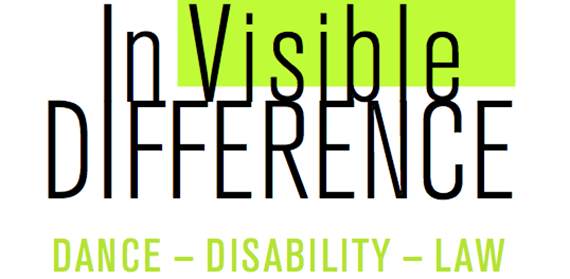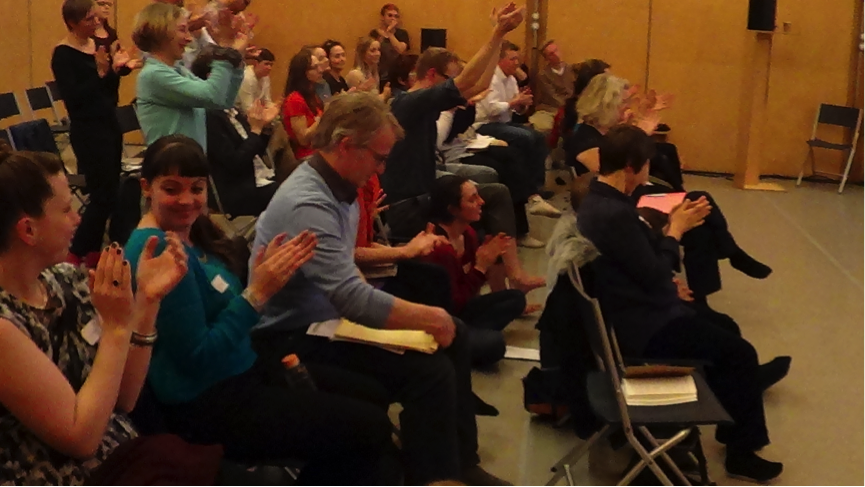Guest blog by Dr Karen Wood.
On the 26th November 2014, the AHRC-funded Invisible Difference: Dance, Disability and Law project delivered a symposium, ‘ Disability and the Dancing Body: A symposium on Ownership, Identity and Difference’ at the Siobhan Davies studios in London. The symposium was well attended and the day began with an opening from Professor Sarah Whatley introducing the work of the project by showing a recently made short film that discusses the important aspects of the research.
There were three questions that laid an important foundation for the day:
- What role do dancers with disabilities play in our cultural landscape?
- What supports or limits the work of disabled dance artists?
- What difference can/should our project make?
Caroline Bowditch joined us via Skype from Australia to deliver the keynote and also kickstarted the lively debate that followed. She discussed issues around cultural heritage and what should be valued. One of the most notable things she mentioned was the support she receives in Scotland how that now makes her feel more accepted as an artist in her own right.
The day proceeded with 3 panels consisting of invited speakers offering provocations and information on the panel subject followed by open discussions with the delegates. The three panels discussed: dance, disability and cultural heritage, dance, disability and the legal frameworks and finally dance, disability and audience engagement. A wonderful treat on the day was the performances from Dan Daw, Kate Marsh and Welly O’Brien and Kimberley Harvey and dancers.
We heard how dance performances made by disabled artists are largely missing from our archives and memory institutions and how we could start to work with these institutions to improve this situation. In the second panel, we heard how the law is structured to support dance and where it fails, reminding us that if the law isn’t working then the dance community can work together to bring about change. Lastly, the issue debated was around the language used by critics and audiences to discuss dance made and performed by disabled performers and what role programmers play in offering a diverse range of work.
We will be following up on some of the themes that came out of the day in our last year (2015) of the project.
Visit Invisible Difference on YouTube and view panels and performances from the symposium.





Comments are disabled